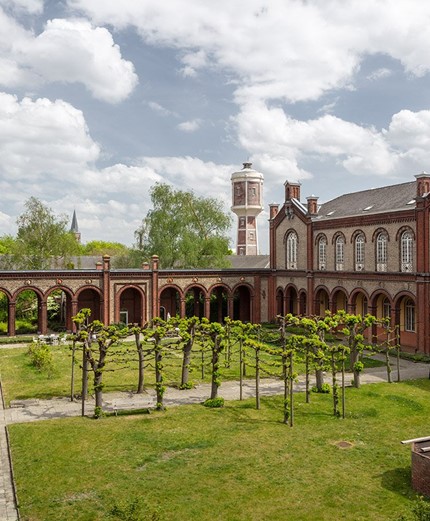High-rise Nobel 1 UZ Gent
With the Nobel I high-rise building, Ghent University Hospital is realizing a new operating base for education, research and innovation in healthcare. It is part of the master plan, which also devotes considerable attention to sustainability. In addition to the energy façade, the rapid realization through the design & build approach is also remarkable.
Client
UZ Gent
Architect
Wiegerinck and LOW architects
Location
Corneel Heymanslaan, Ghent
Timing
start studies Sept 2022
provisional completion Sept 2024
Budget
budget techniques approx. 8,075,000 EUR, excluding VAT
Reference
22009.001
High-rise Nobel 1 UZ Gent
Nobel I is the first new building under the Project U master plan with which Ghent University Hospital is building the hospital of the future. It was built along the Corneel Heymanslaan, has 12 floors and is 62 meters high. On the top floor will be a garden room with a 360-degree view of the city. The lower floors will provisionally house a training center, outpatient clinics and offices of the ICT department.
Later, Nobel I will become part of the living lab, a place where UZ Gent, UGent and various research organizations will join forces. Care-related companies active in medical technology, diagnostics, life sciences and biotech services will conduct high-level research and development there, thanks to high-tech incubators and accelerators, among other things.

Quickly design and build
Together with Wiegerinck and LOW architects and construction company MBG, Ingenium is part of the design and build team in a design & build formula. In this, the design and construction plans are made almost simultaneously, so that construction work can start immediately once the building permit is approved. We also worked out the entire project in Revit 3D, after which MBG did clash checking. We resolved the clashes so that they could create their execution model based on our model. This also saved a lot of time. The first studies started in September 2022 and provisional completion is scheduled exactly 2 years later, which is extremely fast for a building with such an area.

Energy facade
The lower 2 floors of the building have a broader ground plan than the tower, and are characterized by triangular supporting elements that provide a unified appearance. The high-rise itself has an intricate, open grid with large areas of glass in between. Yet sunlight is kept to a minimum through the use of façade elements that project 50 cm. Because the free roof area is limited, the south facade is used to generate green electricity via solar panels.

Technical floors
In the building there is a central core with to its left and right 2 large vertical ducts all over the building in which the technical ducts, pipes and cables are concealed. If the air groups were placed on the roof, these ducts higher up in the building would have to be larger and larger in size, and cause a lot of loss of space on those floors. Therefore, floors 4 (entirely) and 12/13 (partially) were reserved exclusively for techniques. On level +4 - where the air groups for floors 3 and 5 are located - the architects wanted the facade not to be marred by large ventilation grilles. Therefore, visually perfectly integrated ventilation openings were provided in the aluminum curtain wall, which, thanks to an acoustic partition, also filter out noise from outside.
Heat and cold in the building will be generated completely fossil-free by means of an air-water heat pump on the upper floor. The other techniques placed on level +12/13 will serve floors 7 through 11. Because the 3 upper floors are provisionally shell, the techniques are modular. All the ducts are in place and the branches can be made according to the future filling of the spaces.

Techniques follow architecture
Because of its height and location, Nobel I is a striking feature of the Ghent streetscape. The design paid particular attention to the visual interplay of architecture and technology. When it is dark outside, the lighting in the building is always nicely aligned, no matter what floor and no matter how the rooms will be filled. We took care of the complex coordination of the position of ventilation grilles, sprinklers and other techniques with that of the ceiling lighting.

2 types of toilet water
Also not uncommon in this project is the graywater recovery for the toilets in the central core that are accessible to everyone. Indeed, the roof is too small to recover enough rainwater. In the other areas of the building, hygiene standards are much higher, and to avoid contamination with the research and development activities, city water is used for toilet flushing.
Also bitten by
smart technology?
Come push boundaries with us and help make a difference in our industry-leading projects.












